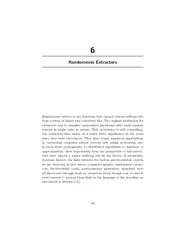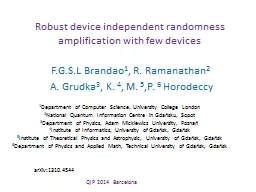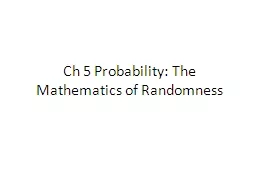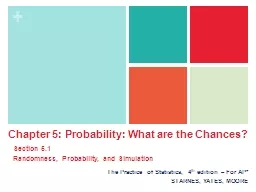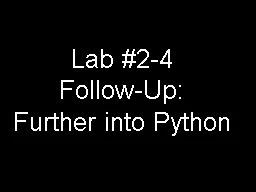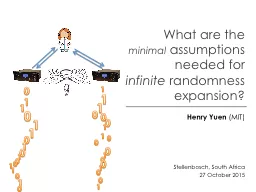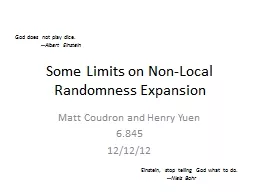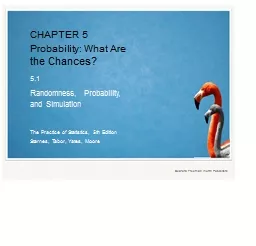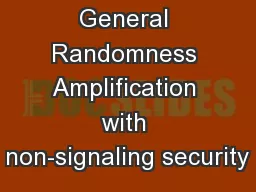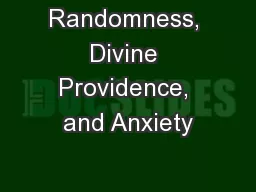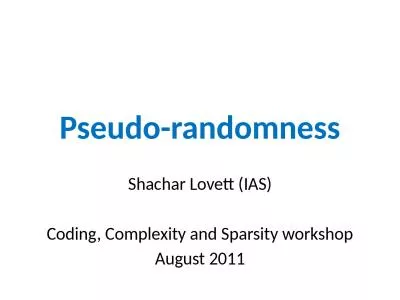PPT-Chapter 6: Probability The study of randomness
Author : pamella-moone | Published Date : 2018-11-10
64 MATCHING PROBABILITIES Probability is a measure of how likely an event is to occur Match one of the probabilities that follow with each statement about an event
Presentation Embed Code
Download Presentation
Download Presentation The PPT/PDF document "Chapter 6: Probability The study of ran..." is the property of its rightful owner. Permission is granted to download and print the materials on this website for personal, non-commercial use only, and to display it on your personal computer provided you do not modify the materials and that you retain all copyright notices contained in the materials. By downloading content from our website, you accept the terms of this agreement.
Chapter 6: Probability The study of randomness: Transcript
Download Rules Of Document
"Chapter 6: Probability The study of randomness"The content belongs to its owner. You may download and print it for personal use, without modification, and keep all copyright notices. By downloading, you agree to these terms.
Related Documents


